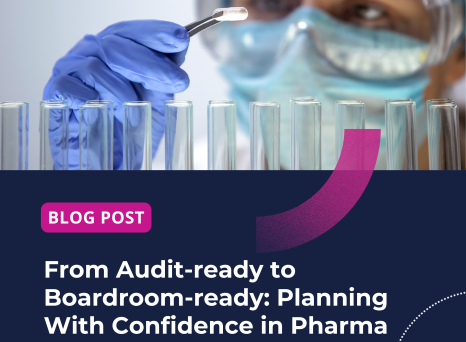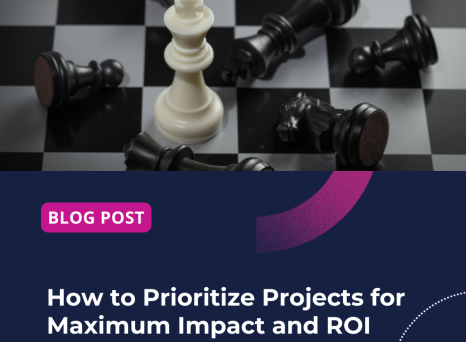Have you ever marveled at the exceptional coordination that building landmarks such as a new subway line in a densely urbanized city like Paris would require?
Have you ever marveled at the exceptional coordination that building landmarks such as a new subway line in a densely urbanized city like Paris would require? How you would need the digging of the new tunnels to match with the delivery of the concrete tunnel sections so that they can be laid down without the buildings overground collapsing? This in turn would require open access to the heart of a city known for being inhospitable to motorized vehicles together with a predictable production of the concrete tunnel sections AND a predictable progress in the tunneling. And so on, and so on…
A large-scale, complex project may include dozens such convergence points. And they are critical. In fact, failed convergence (the unavailability of one or several key deliverables at the moment required at a key convergence point) is the most common source of dramatic delays and cost overrun.
So how do we avoid these failed convergences? One tool put forward by Jeremie Averous in his book, Advanced Scheduling Handbook for Project Managers, is the Convergence Plan.
What Is a Convergence Plan?
A Convergence Plan is a type of schedule that identifies and monitors a project’s critical deliverables and “Convergence Points”, and ONLY THOSE. A Convergence Point, in turn, is a key moment in the schedule where more than two components or deliverables must meet to allow the project to move forward.
Take, for instance, the construction and launch of the Millau Viaduct in France back in 2004. This monumental bridge stands as a remarkable engineering achievement and provides an important direct link between Paris and the Mediterranean.
This construction involved several convergence points. One example is when the construction company launched the first deck, they had a mere 6-hour window to realign the stays for the next construction phase. Without a doubt, this required careful planning of resources — construction workers had to reposition the stays, with the right equipment, to coincide at this one specific time, otherwise, the concrete would have hardened too early.
Similarly, the production of an electric car in the automobile industry also follows convergence planning. In the assembly of an electric car, the integration of the electric components — comprising the motor, inverter, and battery pack — must have a convergence with the vehicle's body. These separate production streams must intersect at a specific moment for assembly to proceed. If any component isn't ready — such as the body isn't fully assembled, or the battery isn't charged, it could stall the entire production process. These deliverables make up a convergence gate, which must be passed to proceed with the project.
Convergence Plans are less beneficial for simple projects because these have limited dependencies and risks. But they can have significant value in larger, complex industries like engineering, automotive, and defense where the size and complexity of projects demand an organized approach. They are easy to implement and extremely effective at preventing costly delays and improving communication.
Why create a Convergence Plan?
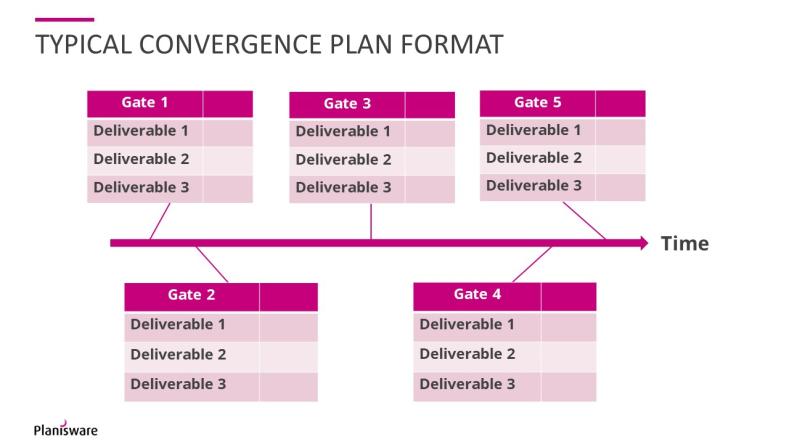
In a nutshell, a Convergence Plan allows you to set the right priorities for the success of your project and keep your stakeholders focused on those.
From a more practical perspective, the Convergence plan provides Project Managers with an uncluttered view of project progress – for themselves and for others – which makes it an outstanding high-level communication tool, especially in complex situations.
The Convergence Plan does this by:
1) Launching a meaningful conversation about the critical drivers of the project
To build the Convergence Plan, the project team must first A) identify project drivers and analyze the project in detail to extract the B) critical deliverables and C) convergence points. That can only be done through an in-depth conversation with the team at the outset of the project. This conversation in turn creates an excellent understanding of the drivers of the project that is shared across the team.
If the Convergence Plan is done at the tender/planning stage, it can prompt the team to reorganize some of the phases and tweak the details of the project to reduce the number of critical convergence points.
2) Consolidating the key project drivers into an easily accessible and understandable plan
On large, complex projects, it’s easy to lose sight of the end goal: there are so many activities, gates, sub-projects, constraints, milestones, deliverables that you can drown in the details.
By putting the critical deliverables and convergence points front and center, the Convergence Plan is a daily reminder of the key drivers to all people involved in the project: your team, but also external stakeholders such as subcontractors. Once communicated to stakeholders, they provide a single, digestible source of truth for everyone across the business.
A simple, somewhat old-school way to share the Convergence Plans and make them easily accessible is to pin them to the wall of your project “war room”. You can also post it on the project homepage in your PPM tool, or on your wiki.
3) Allowing easier maintenance of schedules and planning around risks
At the heart of the Convergence Plan is identifying and monitoring the project’s critical deliverables and convergence points. And when a project manager does that early in the process, it provides them with a deeper, more nuanced view of the project. This in turn gives them a better understanding of what changes can be made, when and how.
This deeper understanding of the project also allows them to build in buffer time before critical deadlines, which builds resilience in the project schedule (see below).
Focusing on the most challenging convergence points makes it easier to assess risks and implement the right preemptive actions for the risks with the biggest potential impact on the project. For example, if one of the suppliers in charge of delivering a critical component is in a sector that could be impacted by supply chain delays, you can pre-emptively establish backup plans with that supplier, and build relationships with secondary providers to fill gaps on short notice.
This preparation directly impacts your bottom line. When delays aren’t accounted for, they cost money.
4) Assigning responsibilities and promoting accountability
It’s unrealistic to imagine that one person can keep track of the hundreds of co-dependent deliverables that make up a large-scale project. The primary project manager will always remain responsible for the overall delivery of a project, but with a Convergence Plan, you can more easily assign responsibility because you bundle together deliverables and convergence points into “gates”:
“For each gate, a responsible person should be identified, the Gate Owner, who is responsible for monitoring and taking action to ensure that the gate is completed on time. Even if all the deliverables in the gate do not fall under his responsibility or budget, the Gate Owner is responsible for monitoring the Gate overall progress and taking action if it becomes obvious that a deliverable might be late.” — Jeremie Averous
5) Enabling project managers to understand how much “buffer” they have
When estimating an activity or forecasting the delivery of a critical element of the project, experienced project managers will factor in buffers to allow for small delays. And you can tell how well your project is advancing based on how this buffer is used up (or not). This is called the “[float](https://www.techtarget.com/whatis/definition/float-project-float-slack#:~:text=Project float%2C also known as,the deadline for the project.)”.
The problem is, the more dependencies you have, the harder it is to keep track of how your float is behaving: are your eating up all your buffer at a fast speed? Are you keeping a healthy margin?
Convergence Plans can help here because a key best practices for using them is to merge together the buffers that you would normally assign to individual activities into one big buffer before each convergence point. This allows you to monitor your float in a much more effective way. (see below)
How to Create a meaningful Convergence Plan
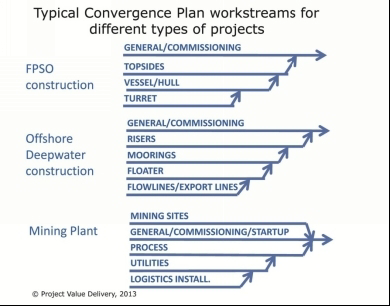
Identify the project’s critical deliverables
This should be the first thing you do once the project launches:
- Identify the key workstreams of the Project and where they converge – in addition to a ‘general Project management’ workstream, there could be 2 to 6 different workstreams depending on the complexity of the Project.
- Identify the key deliverables without which the Project could not be delivered. Create a list of the parts, products, raw materials, or documents involved, and assign them priority levels with the help of stakeholders.
What need to be identified are actual physical products or documents that need to be available, preferably corresponding to decision points (e.g. decision on an engineering concept or an option for installation). At this stage, do not seek to link those critical deliverables logically or to put them on a timeline. — Jeremie Averous
- Categorize those deliverables by workstream
- Further brainstorm whether other key decisions and deliverables need to be added to the Project picture.
This is best done as a facilitated workshop once the core Project team has been assembled because it will also contribute to the creation of the actual Project execution strategy.
Group deliverables around convergence points
After defining the “what”, define the “when” and “where”. Group co-dependent deliverables around convergence points.
Set the latest date of delivery (and build in buffers)
For each deliverable, take the latest date at which it can be delivered without delaying the project, then add a “buffer” between the date the deliverable should be available and the convergence point. The buffer will be determined by the project team, based on their experience of this particular deliverable.
Limit the number of critical convergence gates that will be tracked throughout the Project execution to ensure a real focus (rule of thumb is one convergence gate every 2-3 months for each workstream); there should not be more than 4-6 main deliverables for each critical convergence point. If they are more, group them under a single set of deliverables. — Jeremie Averous
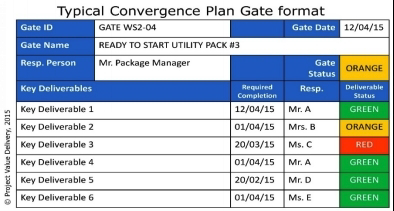
4. Update your plan regularly
As mentioned above, a responsible person should be identified for each gate. They are in charge of monitoring it and taking (sometimes drastic) action to make sure that the gate is completed on time, even if that gate does not fall under their scope or budget.
In turn, the gate owner should name one person responsible for each deliverable within that gate.
Every stakeholder should check and update their respective convergence point – even if there’s no progress to report, or the deadline is in the distant future. In doing so, you can catch and mitigate problems — such as supply chain issues — well before they impact your project timeline.
“Discipline” & “Buffer monitoring”: 2 keywords for using Convergence Plans
Convergence Plans are scalable, easy to implement and extremely effective BUT, like everything, they do require the right mindset, which can be encapsulated into two words “discipline” and “buffer monitoring”.
Discipline
Or said otherwise Dates of gates cannot / should not change. The Convergence plan must be regularly reviewed at project leadership level. And deliverables must be 100% completed to be validated.
The only way a convergence gate can change is if there is a very significant change in the execution strategy that calls for a rebaselining of the whole project schedule.
Float monitoring
By studying how the float on an activity moves compared to the (fixed) convergence point, you can derive an indication of how well the project is effectively converging. By definition, an activity which float diminishes by one month every month will never happen!
This provides project managers with an uncommonly reliable early warning system for deliverables that might miss the mark, IF delivery forecasts are reviews and challenged to ensure that they depict reality (and not the wishful thinking of the person who reported them!).
If the buffer monitoring system starts showing that a deliverable is not converging as planned, alarms should be raised and action taken quickly.
If a critical convergence point is not going to be met, it should be an organization-wide wake-up call that goes all the way to the top of the organization. And this should happen even if it is a one week delay on a gate at the start of the Project!
Why should you treat a delay in an early gate the same as one in a later gate? Because even a small delay at the first few convergence points has the potential to snowball into a massive delay that can derail the whole project. That’s why companies such as Toyota who pioneered the technique take massive corrective action from the outset.
For more tips, Jeremie Averous outlines a detailed process for creating a Convergence Plan in his Advanced Scheduling Handbook for Project Managers.
Scheduling Large-Scale Projects, Simplified
Convergence Plans are valuable because they’re simple. Crafting one is an exercise in focus. The process allows project managers to focus on key deliverables and convergence points in order to mitigate project risks and delays. The resulting graphic is a visual distillation of a successful project: deliverables gathered in concert to complete the project schedule.
Because the keys to convergence gates are binary (either the deliverables converged on time, or they didn’t), the plan is also a litmus test for success. Create one at the outset of a large project, and you’ll have a reference point to measure an otherwise murky series of work streams, priorities, and sub-projects.

